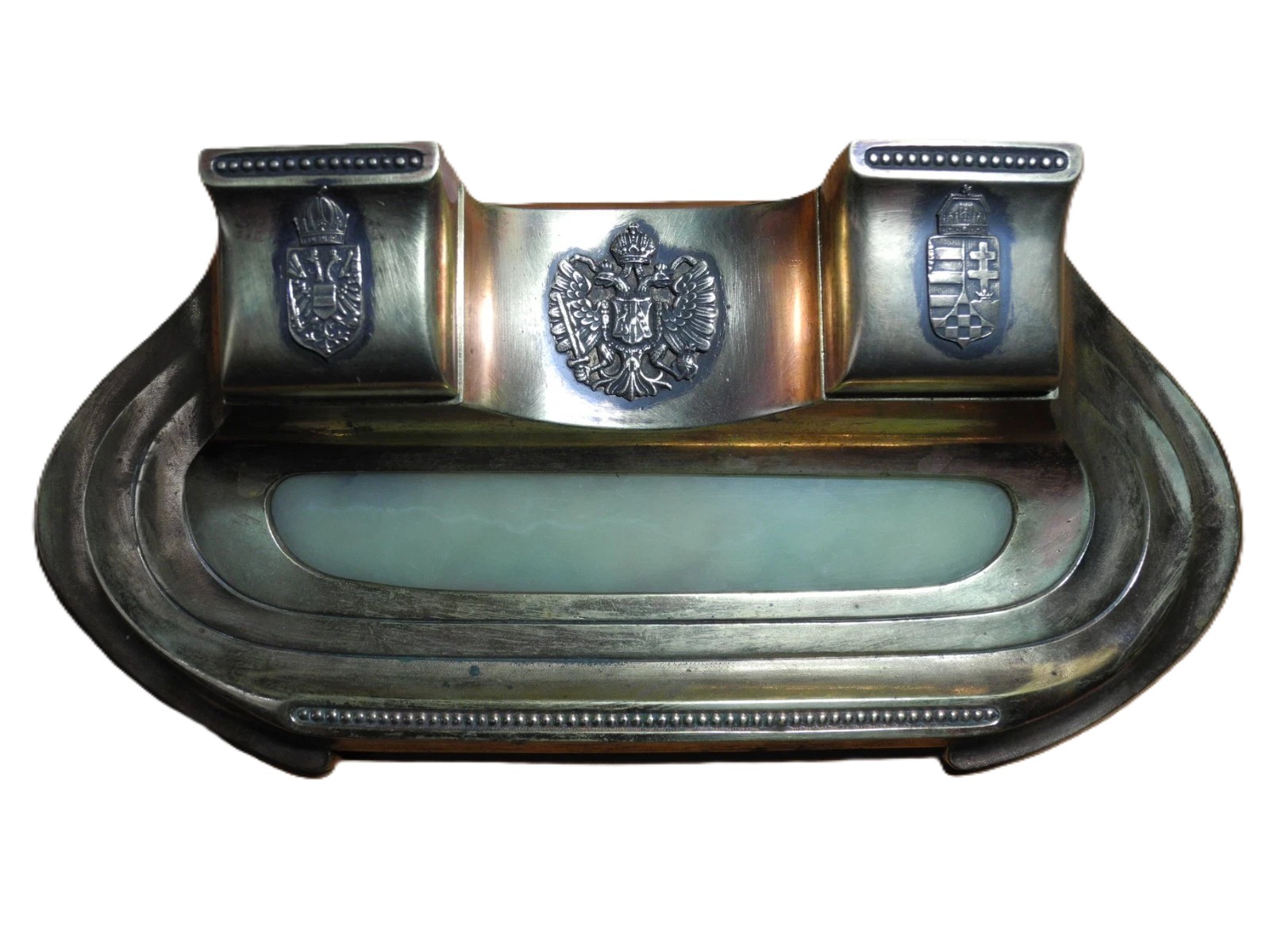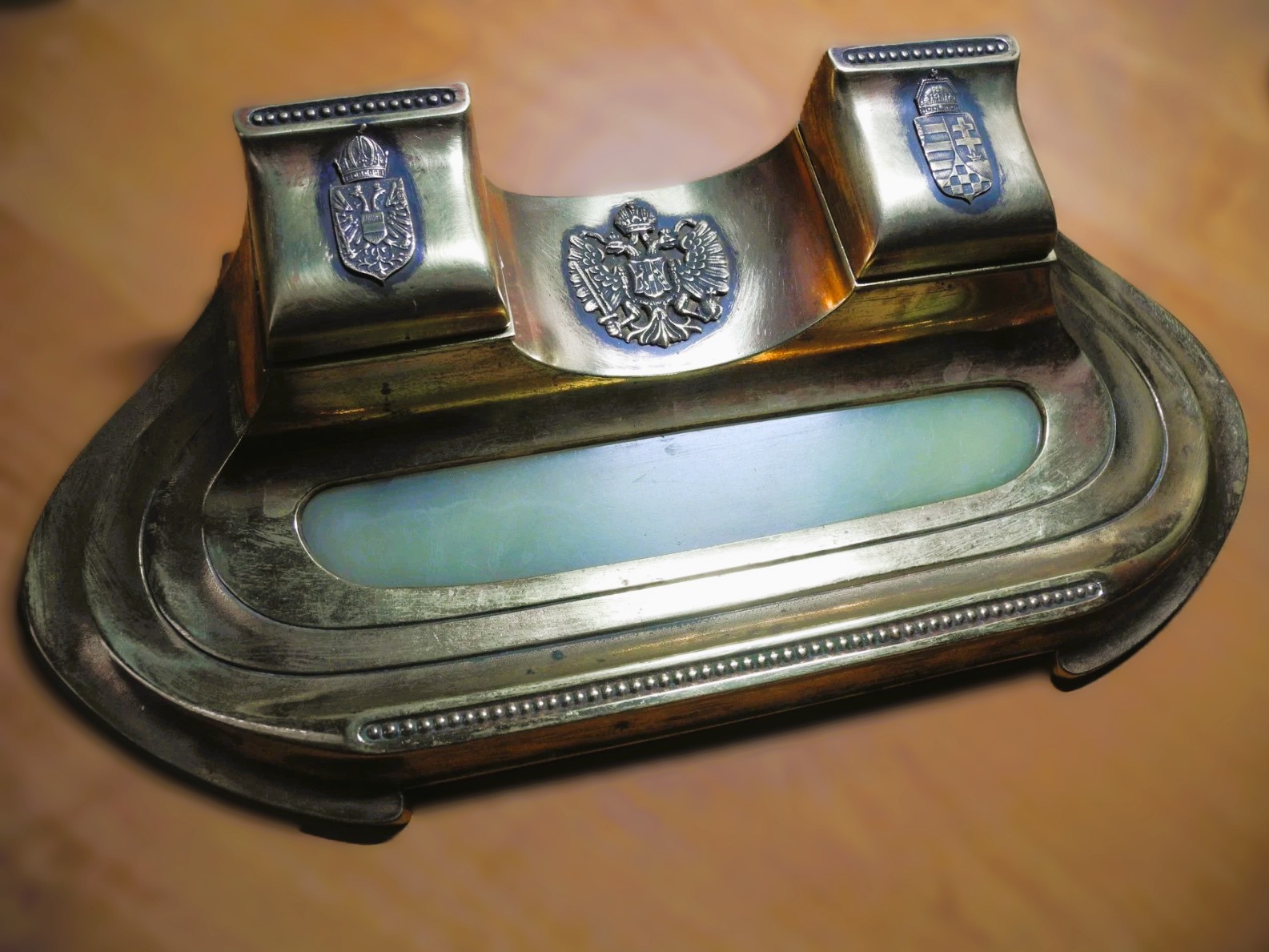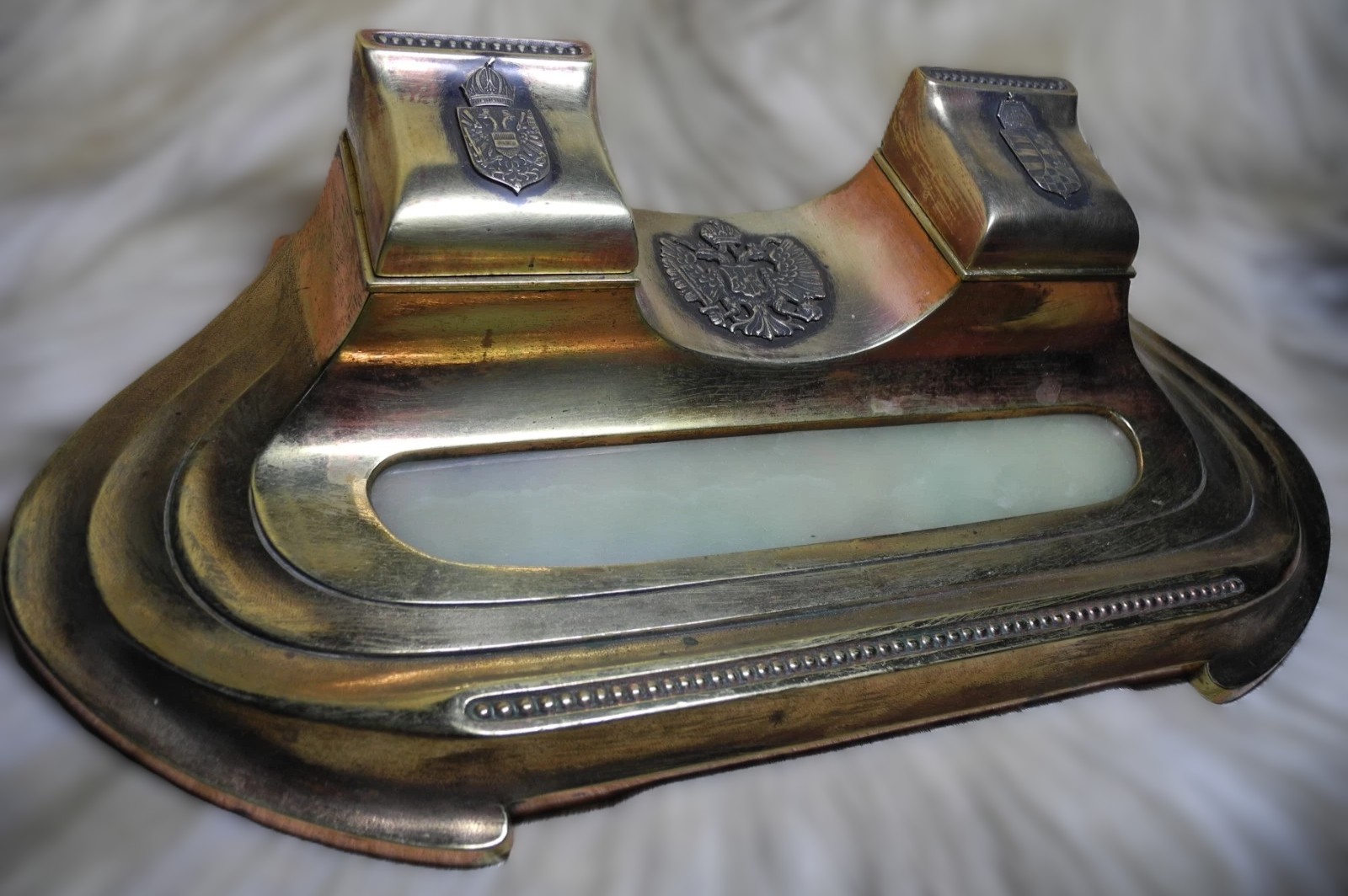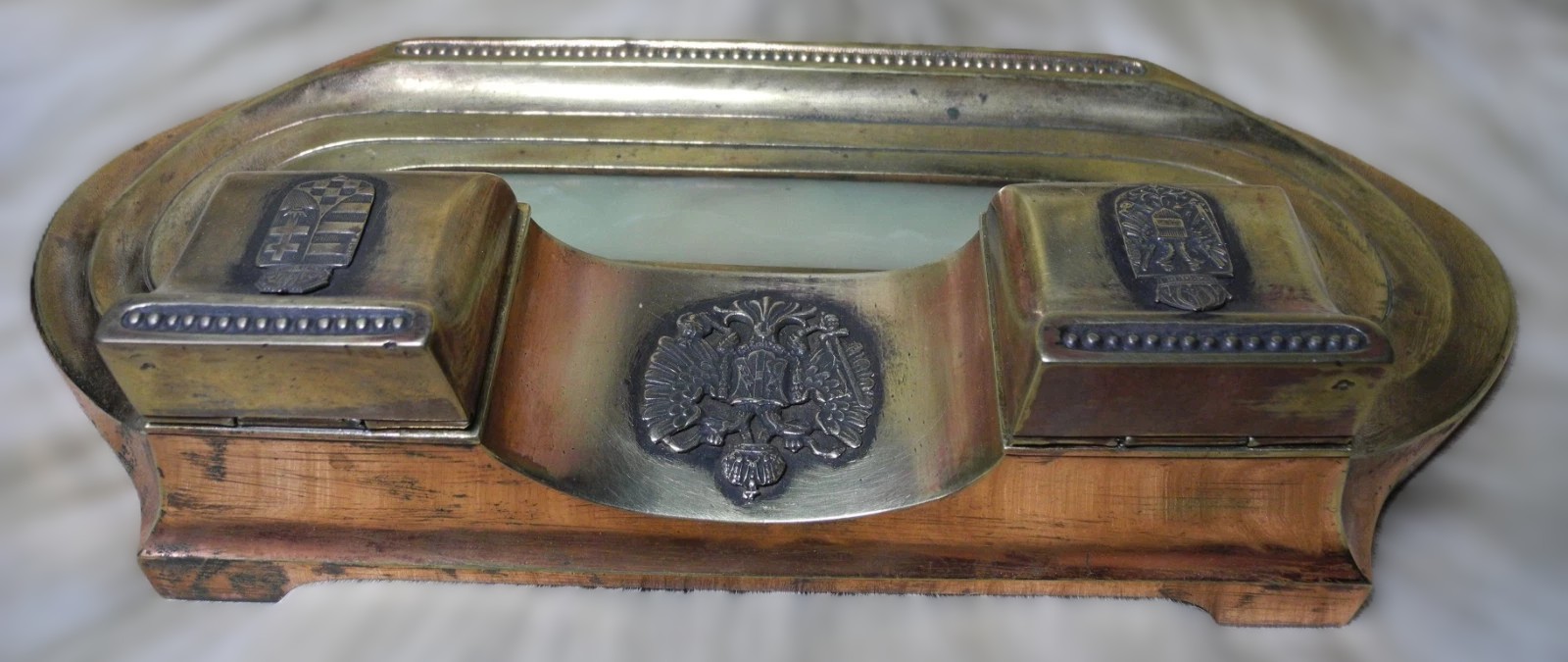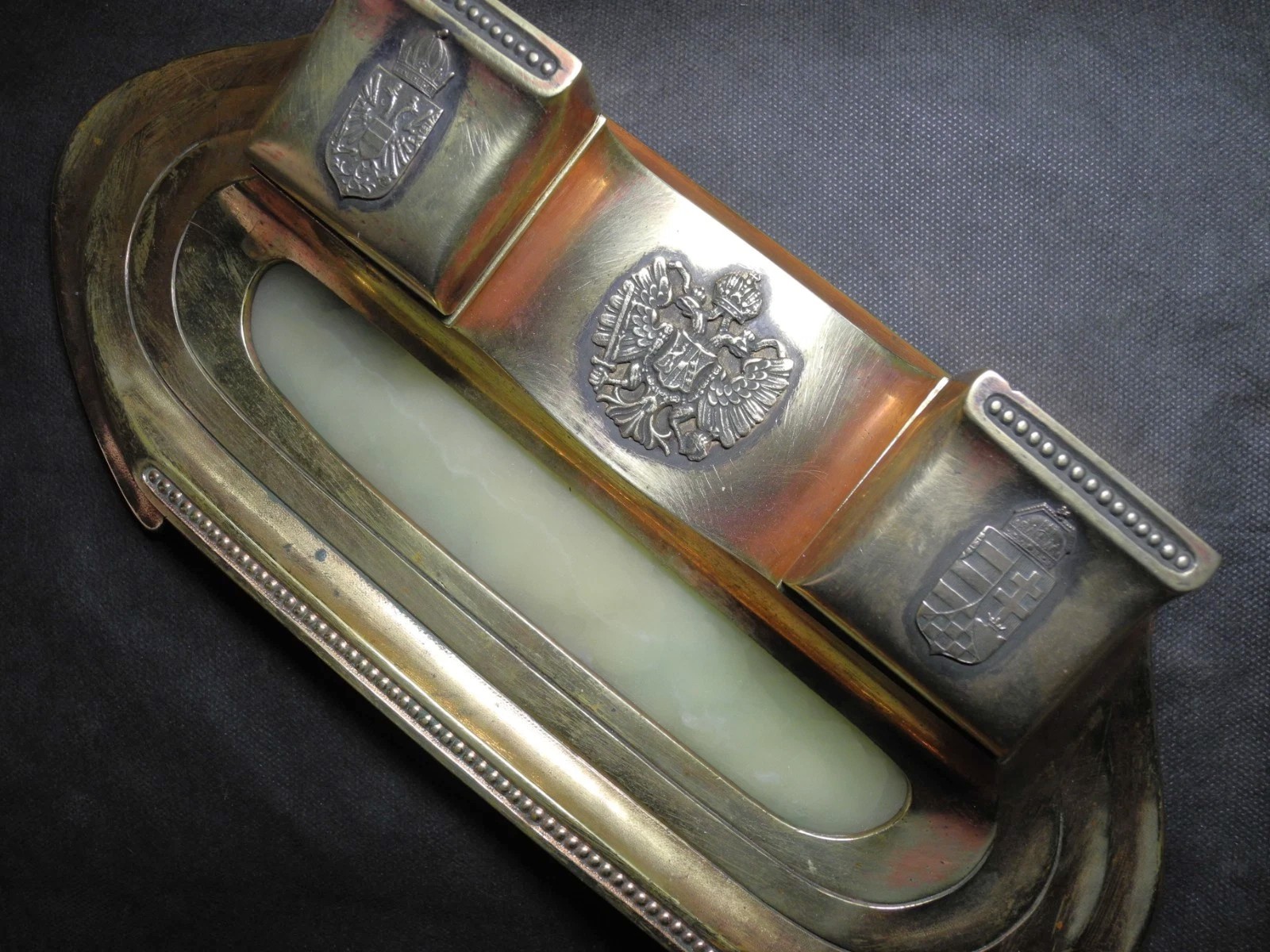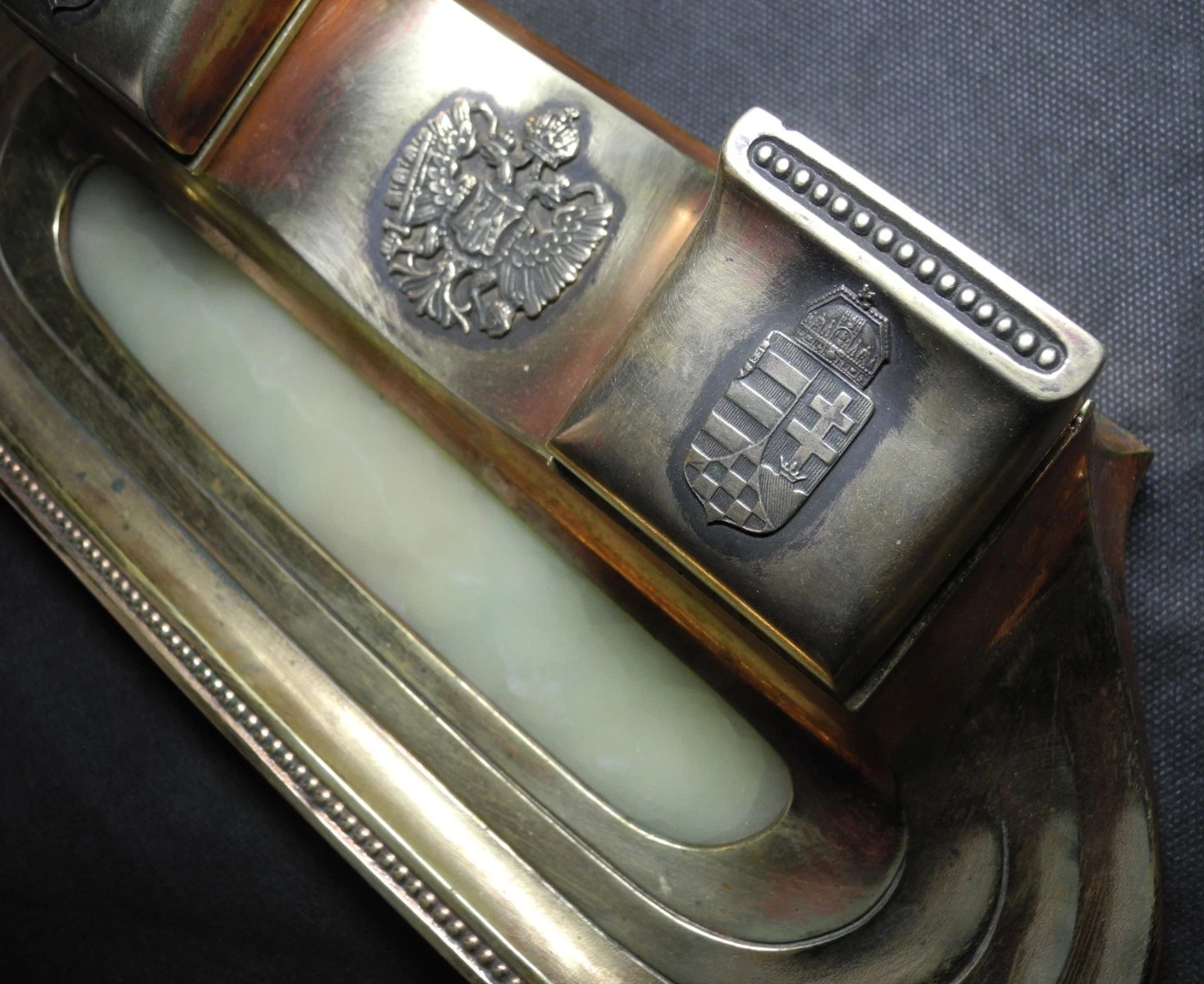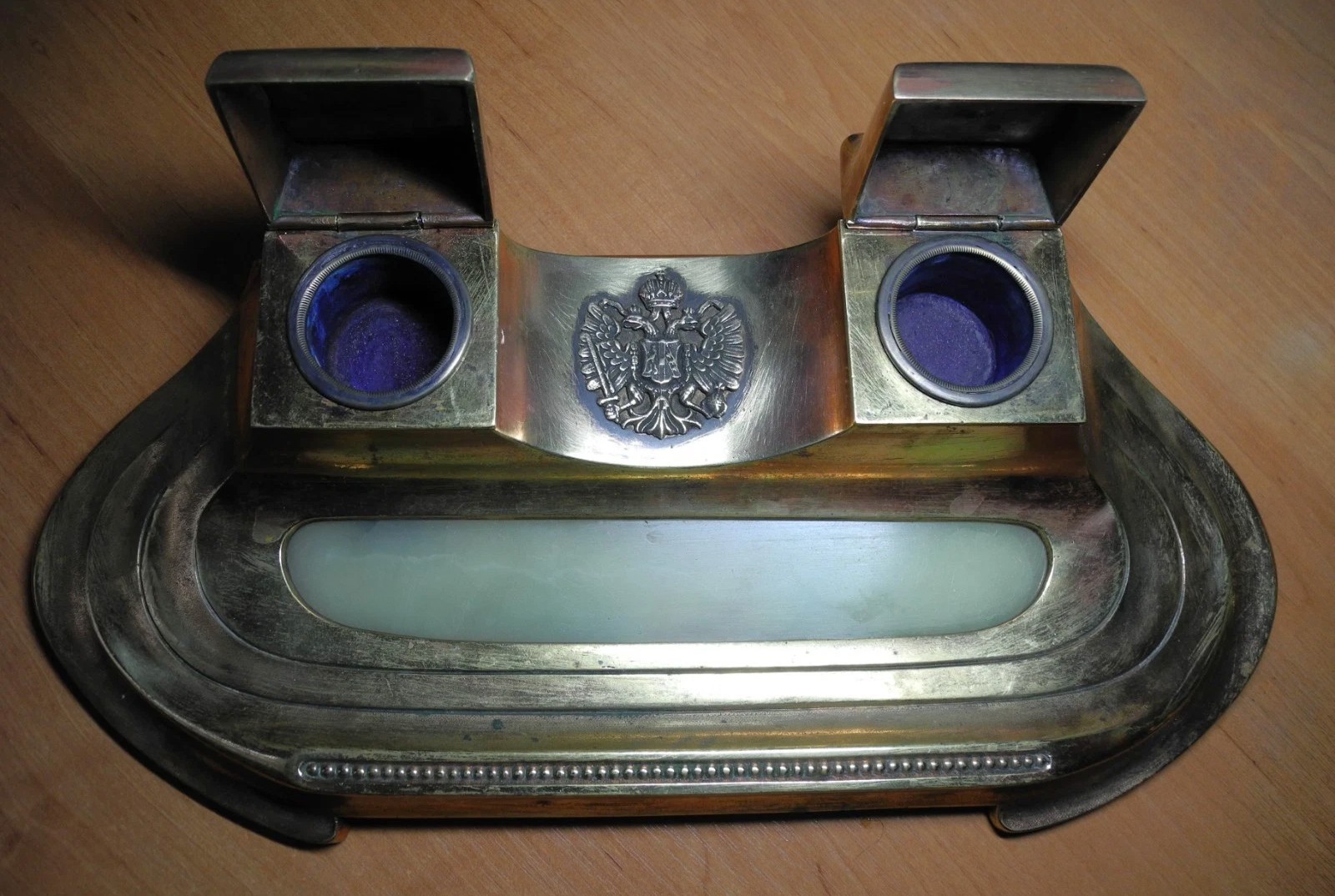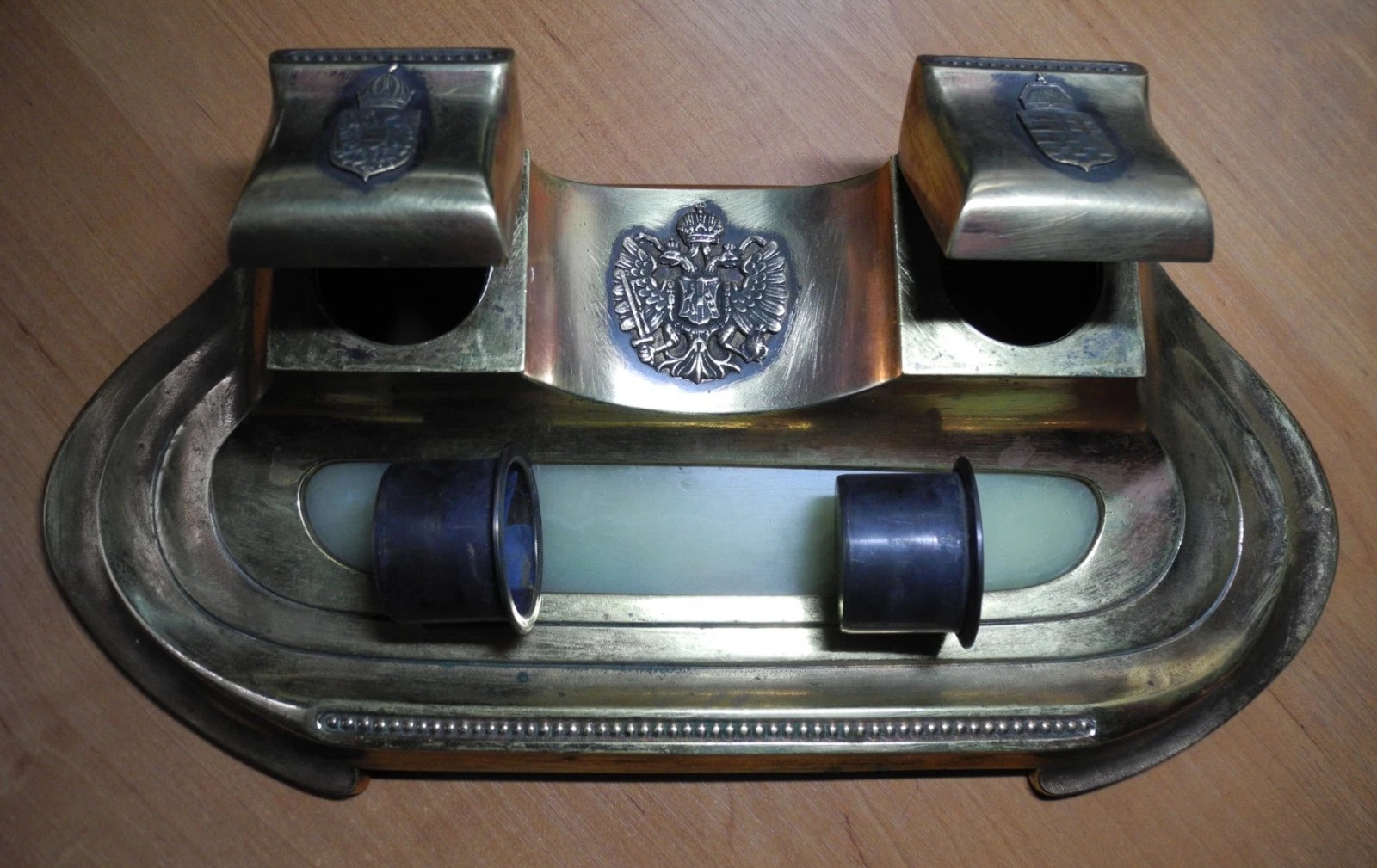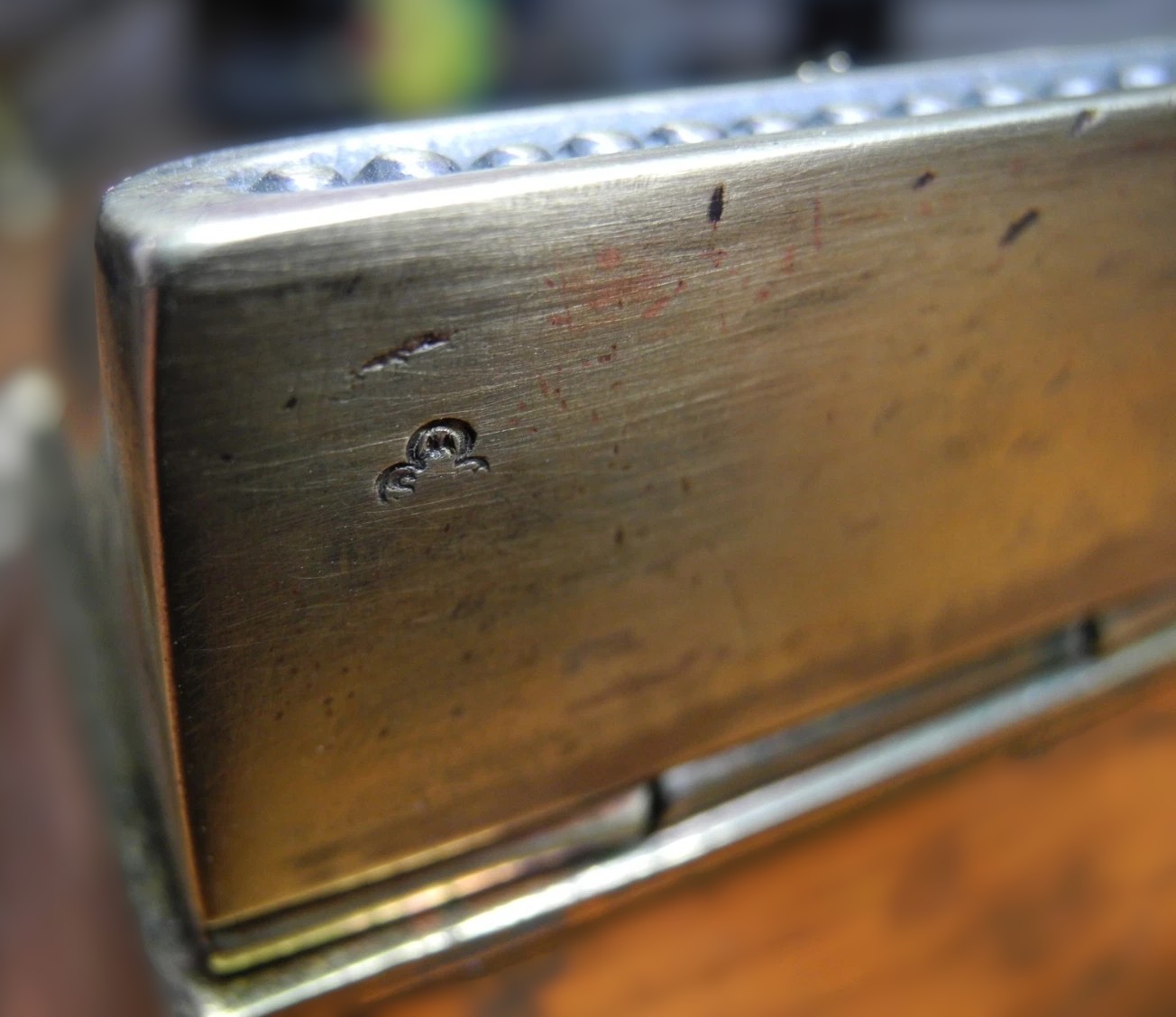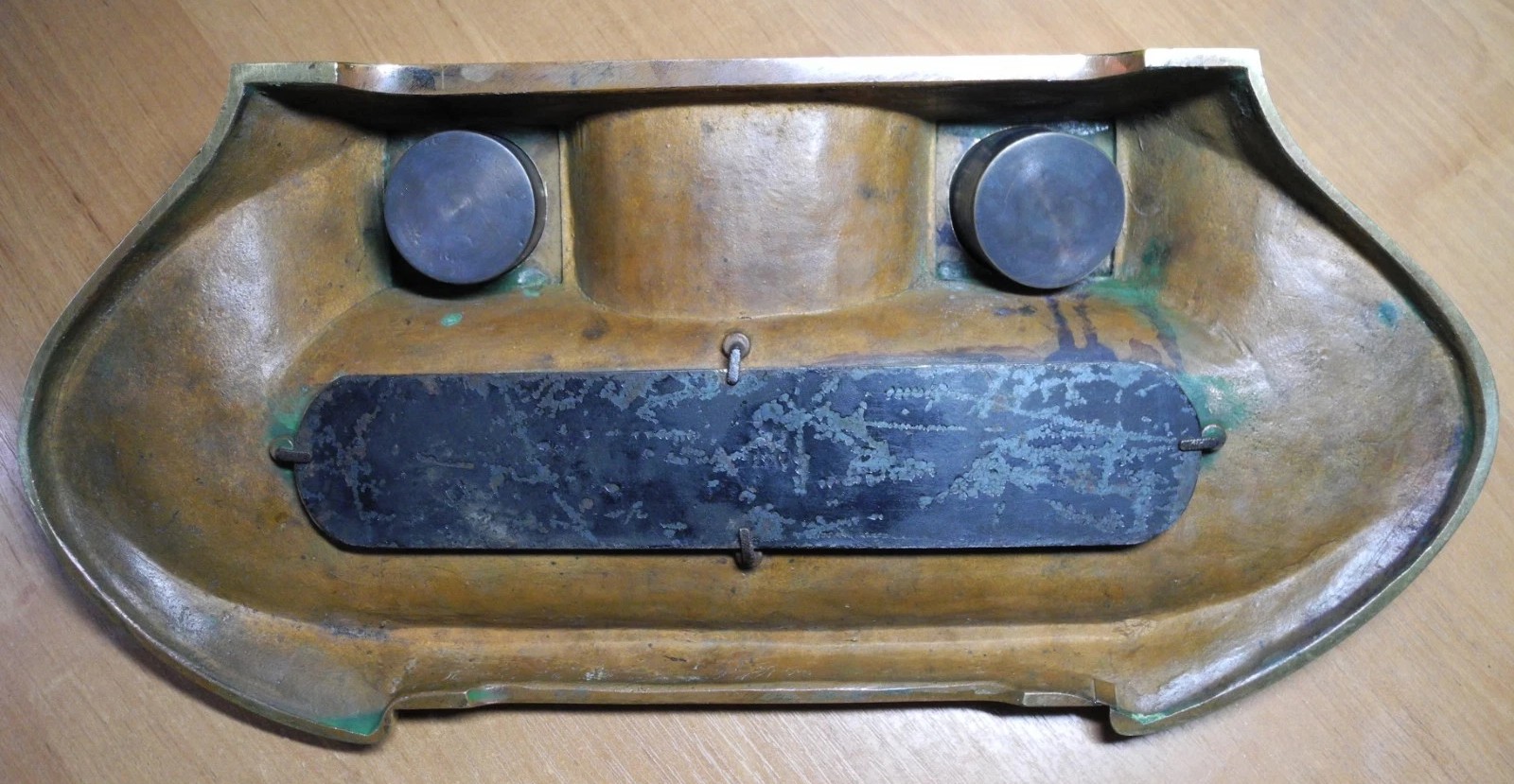
Austro-Hungarian Empire Inkstand
| Categories | Bronze - Brass - Copper |
| Type | Military |
| Material | Brass |
| Markings | See Narrative |
| Manufacturer | Undetermined |
| Origin | Austria |
| Date or Era | circa 1910 |
| Measuring | 13 ¾” x 6” |
This is an example of an official or military-themed desk set from the Austro-Hungarian Empire. The inkstand is made of brass and has two inkwells covered with hinged lids.
The Three Insignia (Coats of Arms)
The three coats of arms on this inkstand tell the story of the K.u.K. (Kaiserlich und Königlich), or Imperial and Royal, Dual Monarchy. They represent the two halves of the empire and the ruling house that unified them.
- Center Insignia: The prominent double-headed eagle is the coat of arms of the Austrian Empire (officially known as Cisleithania). It is a centuries-old symbol of the Habsburg dynasty and represents its long history of leadership, originally as emperors of the Holy Roman Empire. The crown on the eagle’s head signifies the imperial authority.
- Left Inkwell Insignia: The crowned shield with the single-headed eagle is the coat of arms of the Habsburg-Lorraine dynasty, the ruling family of the empire. This specific emblem was used to represent the Imperial House itself.
- Right Inkwell Insignia: The crowned shield with the striped and crossed segments is the ancient coat of arms of the Kingdom of Hungary (officially known as Transleithania).
The use of these three symbols together on one object—representing the Imperial House, the Austrian Empire, and the Kingdom of Hungary—is a direct and powerful statement of the Austro-Hungarian Dual Monarchy.
The Clover-like Mark
The clover-like mark on the lids is a trefoil stamp, which is a known marking on brass, bronze, and silver items from the Austro-Hungarian Empire. This mark is typically a maker’s mark or an assayer’s mark, which certifies the metal’s quality and origin.
The Pen Tray Stone
The light-colored, translucent material used for the pen tray is alabaster. This stone was a popular choice for decorative objects in the late 19th and early 20th centuries due to its smooth, milky white appearance and its translucency. It was often used in inkstands and other desk accessories to provide a clean, visually appealing contrast to the metalwork.
Sold for $250 in July 2025
Content disclaimer. The information posted is the owner’s best knowledge and may not have been vetted by the SOIC. We welcome comments, corrections, and additions, working to make our website information comprehensive and accurate.
Join the Society of Inkwell Collectors (SOIC) – it’s free!
Founded in 1981 as a non-profit organization,
we are documenting inkwells (and accessories).
We’re here to help and inform!
